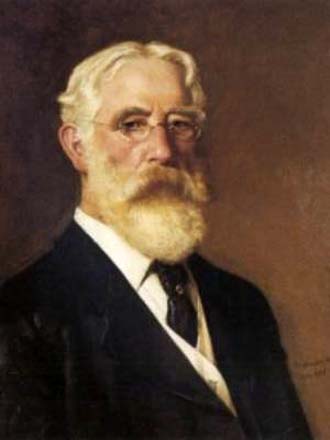
John George Brown
19th Century American Artist

Birth
1831 (Durham, England)
Death
1913 (New York City)
Lived/Active
New York/California
Biography from the Archives of AskART:
Born into a poor family in Durham, England, John George Brown earned a reputation as one of 19th-century America's most skilled painters of children, especially entrepreneurial, cheerful street urchins who earned a pittance as boot blacks, newspaper vendors, etc. In some circles, he was dubbed the "Boot Black Raphael" because of the glowing faces of his child figures and his skill of execution. His paintings of these sympathy-arousing children were so popular in a Victorian era of increased industrialization that he became rich from painting sales as well as royalties from lithographs.
Brown showed early drawing talent but was discouraged by his lawyer father who insisted that he learned a trade, so he apprenticed for seven years with a glass cutter at Newcastle-On-Tyne. He worked at this trade in Edinburgh, Scotland and attended the School of the Royal Scottish Academy under Robert Scott Lauder.
At age 22, he went to London and earned a living painting portraits. Inspired by a music hall performer singing about the fascination of American life, he emigrated to Brooklyn and supported himself as a glass cutter at the Flint Glass Works in Brooklyn. His designs so impressed his employer that he helped Brown study in New York with miniaturist Thomas Cummings whose daughter Brown married.
He studied art at night at the National Academy of Design, and in May, 1856, rented his first studio, which was located in Brooklyn. In 1860, he began painting his signature portraits and juvenile figures, and in 1863, he was elected a member of the National Academy of Design. He also served as a teacher at the Academy where his classes were very popular.
To escape the pressure of his buying public and pursue other talents, he painted landscapes, some of them rural scenes including the White Mountains of New Hampshire and the Hudson River Valley with treatment of light and shadow, in the style of Albert Bierstadt and Worthington Whittredge. One of his exhibition venues was the California State Fair in 1881 and 1884.
Source:
Michael David Zellman, "300 Years of American Art"
Peter Falk, "Who Was Who in American Art"
Edan Hughes, "Artists in California, 1786-1940"
Biography from Roughton Galleries, Inc:
JOHN GEORGE BROWN (1831-1913)
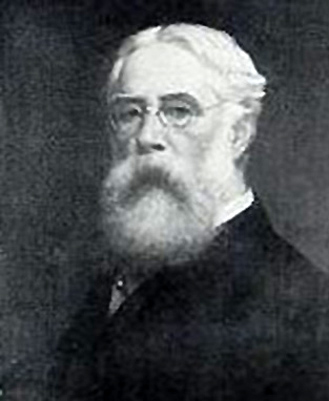
John George Brown's sentimentalized portrayals of street urchins, reproduced by the thousands, made him the richest and most celebrated genre painter in turn-of-the-century America. Born in Durham, England in 1831, Brown studied art in England and Scotland before coming to America in 1853.
He was a glassblower in Brooklyn, and a student at the National Academy of Design in New York City. He opened a studio there in 1860, when his painting "His First Cigar" launched his national reputation. Brown exploited his considerable talent to supply the Victorian taste for his specialty-adept pictures of young white shoe shiners, vendors and servants.
His First Cigar
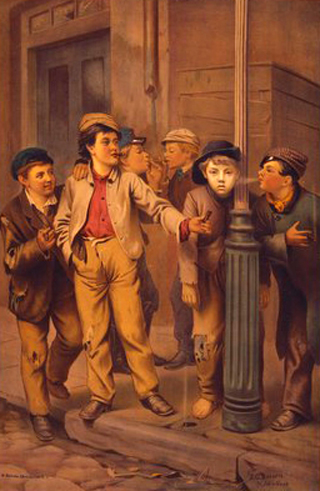
From the 1860's on, his reputation as "the boot-black Raphael" never flagged. Toward the end of his life, his yearly income averaged $40,000. Originals sold for $500 to $700. Royalties from just one lithograph, distributed with packaged tea, totaled $25,000. Though he claimed the successful formula of "contemporary truth" for his pictures, none gave doting collectors or wealthy patrons cause for social alarm. He falsified his subjects, who were in reality minority immigrants whose lives were often wretched struggles for survival.
Brown's street juveniles are invariably cheerful, spunky tykes-never sick, sad, emaciated, hungry or noticeably foreign. Their ragged clothing is picturesque, their grime cosmetic. They are undeniably appealing. Even the most uneven of Brown's popularized works show painterly skill and sound training.
Brown realized he was pressured by his buying public into subjects and techniques below his true ability; the pictures he painted for pleasure, using his full range of artistry, are straightforward and distinguished. Most are of country scenes and outdoor pastimes, with none of the contrived look of his commercialized "trademark" paintings.
Brown's "View of the Palisades" (1867, private collection) is a delightful and unaccustomed departure from his genre work. Showing boats on a calm, open bend of the Hudson, it is broadly painted, expansive in feeling, with crisp detail and care in every brushstroke. Brown died in 1913 in New York City.
View of the Palisades
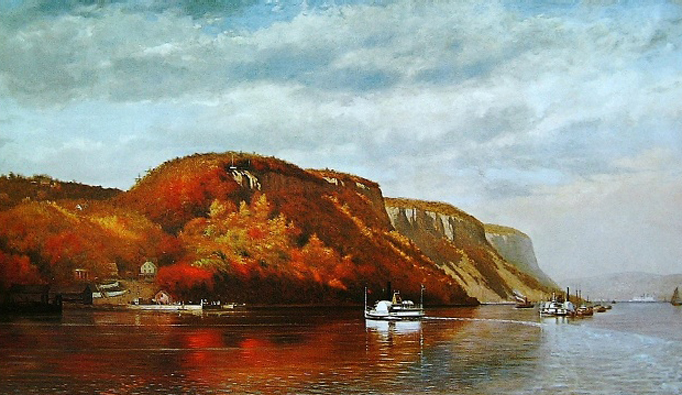
MEMBERSHIPS
National Academy of Design
American Water Color Society
PUBLIC COLLECTIONS
Corcoran Art Gallery, Washington, DC
Metropolitan Museum of Art, New York City
Museum of Fine Arts, Boston
Peabody institute of the City of Baltimore
G.W.V. Smith Art Gallery, Springfield, Massachusetts
Biography from James Graham & Sons, Est. 1857:
Born in England, J.G. Brown studied art in England and Scotland before coming to America in 1853 where he became a glassblower in Brooklyn and a student at the National Academy of Design. By the turn-of-the-century he was one of the most celebrated and commercially successful artists in the United States.
J.G. Brown was a genre painter and it was his sentimentalized portrayals of street urchins which appealed to the taste of the Victorian public. It was only during the Victorian age that "childhood" came to be seen as a special time of arcadian innocence and children were no longer viewed as being small versions of adults. It did not seem to bother the Victorians that children of the poorer classes toiled for their livelihoods on city streets, or for long hours in factories or mines. J.G. Brown's depictions of street children showed them as happy, well fed and picturesquely attired. Even the later Ashcan School painters would show children of the lower classes in a picturesque way. Only with the advent of photographers like Lewis Hine and Jacob Riis would the unvarnished truth of the life of impoverished children be revealed. Brown's claim that his was a formula of "contemporary truth" in painting was self deluded and the Victorian collectors were happy to go along with the fiction.
On some level, Brown felt that the collecting public had required him to paint below his ability, but, in fact, even if some find his subjects to be cloying, the paintings of street children are beautifully executed with a high degree of ability in evidence. Brown is a superb and well trained draughtsman and his portraits are extremely lifelike.
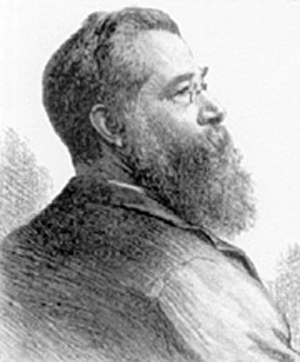
Biography from Print Club of Albany:
John George Brown was one of the most successful genre painters of the second half of the 19th century. His paintings of country and city children were enthusiastically collected during his lifetime, and by the time he died in 1913, he was a very wealthy man. A methodical and conscientious worker, Brown had a total oeuvre numbering more than a thousand paintings.
Brown was born near Durham, England on November 11, 1831. While serving an apprenticeship to a glass worker in Newcastle-on-Tyne, he took evening drawing classes with William Bell Scott, an artist associated with the Pre-Raphaelites. After further study in Edinburgh and London, Brown immigrated to the United States in 1853, settling in Brooklyn, where he found work in a glass factory. He continued his artistic studies at the Graham Art School in Brooklyn, then, in 1857, Brown enrolled in the National Academy of Design, taking antique and life classes taught by Thomas Seir Cummings (1804-1894). Wasting no time, Brown launched his long and impressive exhibition schedule when he sent two paintings to the National Academy of Design annual exhibition of 1858. In addition to making this move from Brooklyn into the Manhattan art world, Brown increased his involvement in the Brooklyn art community, becoming a founding member in 1859 of the Brooklyn Art Social, and two years later, becoming a member of the Brooklyn Art Association.
One of the most important connections Brown made during these years was his friendship with the collector Samuel P. Avery. Avery began to purchase Brown's work in 1858, introduced him to New York artists, and made it possible for him to take a studio in the prestigious Tenth Street Studio Building in 1860. Brown was elected an Associate of the National Academy in 1861, and a full Academician in 1863. He was extremely active in a number of artist organizations over the years, serving as vice-president of the Academy from 1899 to 1903, and as president of the American Watercolor Society from 1887 to 1907.
Brown's works are found in numerous museum collections, including The Metropolitan Museum of Art, New York, NY; Museum of Fine Arts, Springfield, MA; Museum of Fine Arts, Boston, MA; Newark Museum of Art, Newark, NJ; High Museum of Art, Atlanta, GA; Birmingham Museum of Art, Birmingham, AL; Terra Museum of American Art, Chicago, IL; Cleveland Museum of Art, Cleveland, OH; University of Wyoming Art Museum, Laramie, WY; Yale University Art Gallery, New Haven, CT; and the Corcoran Gallery of Art, Washington, DC; as well as many important private collections.
Submitted October 2005 by James Halperin, Co-Chairman Heritage Galleries & Auctioneers, Dallas, Texas
All Biographies Quoted From: John Brown - Biography
Selected Works of John George Brown
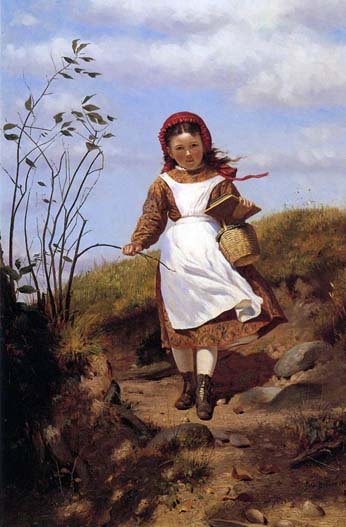
A Breezy Morning: 1876
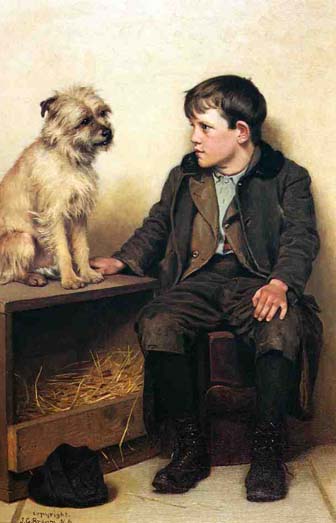
A Confab: Date Unknown

A Joint Investment: 1878

A Leisure Hour: 1881
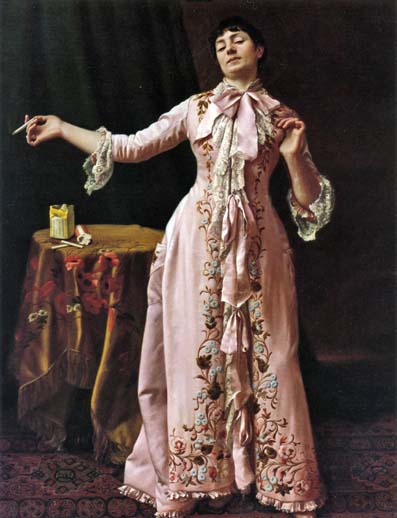
A Liberated Woman: 1895
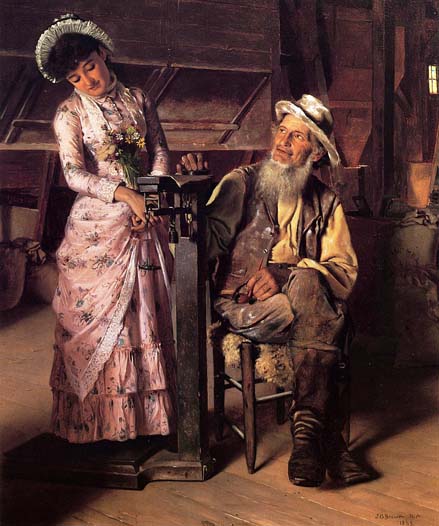
A New Weight: 1883
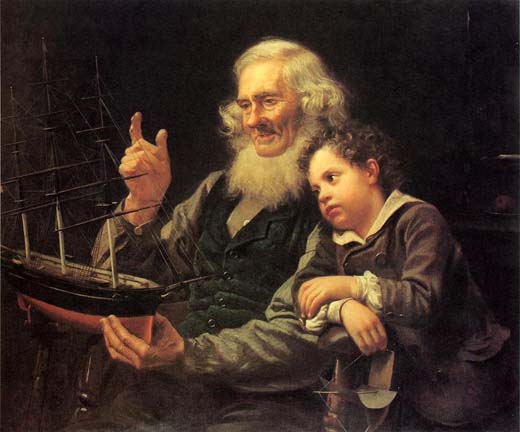
A Story of the Sea: 1883

A Street Fair: 1879
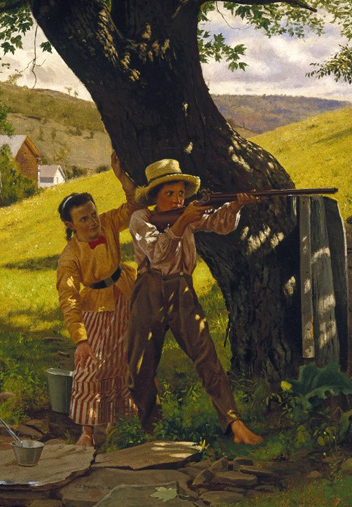
A Sure Shot: ca 1875
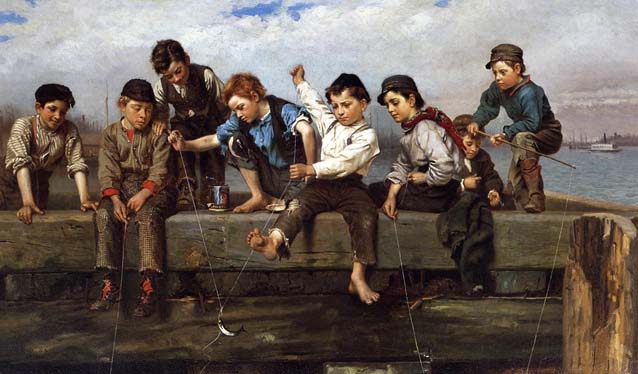
A Thrilling Moment: 1880
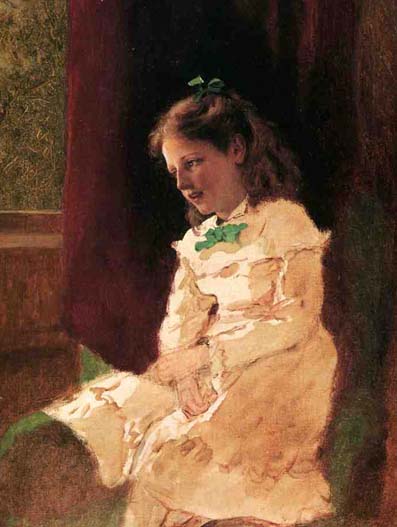
A Young Girl by the Window: 1868
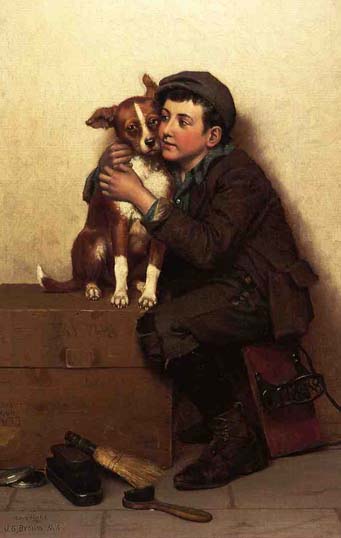
Against His Will: Date Unknown
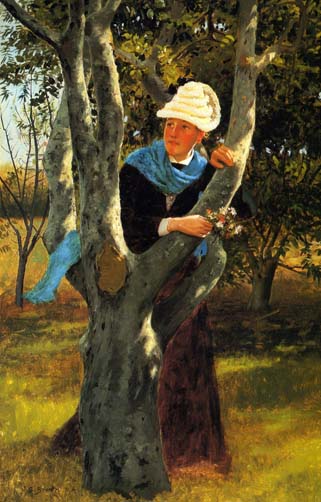
Among the Trees: 1873-77
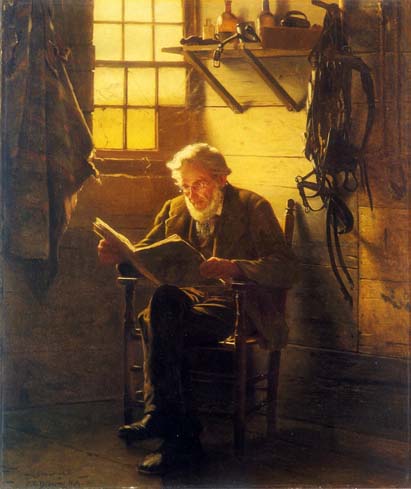
An Idle Hour: Date Unknown
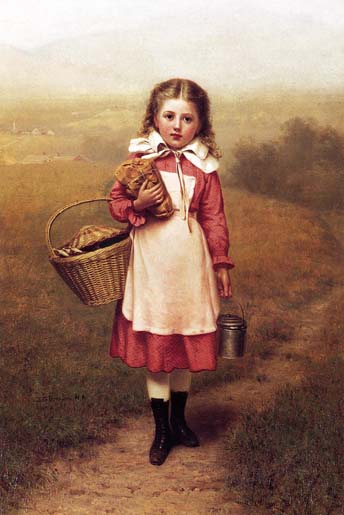
Autumn Landscape: 1870
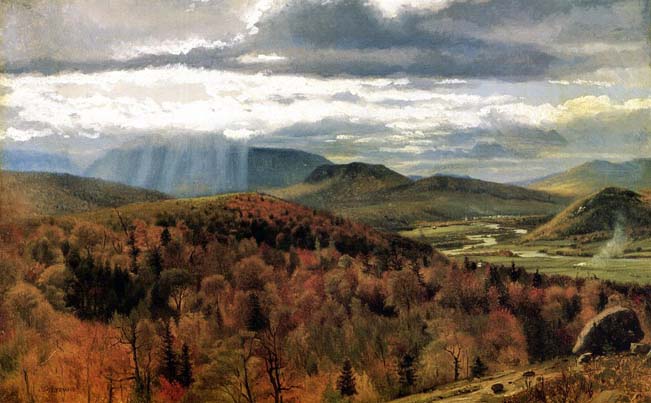
Autumn Landscape Shelburne, VT: Date Unknown
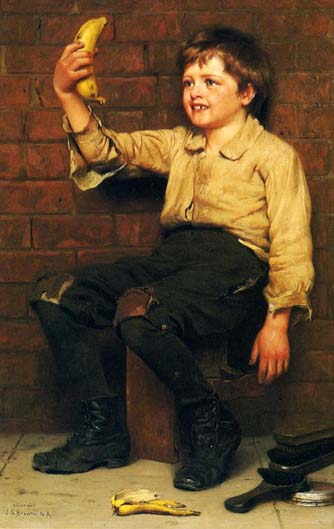
Banana Boy: Date Unknown
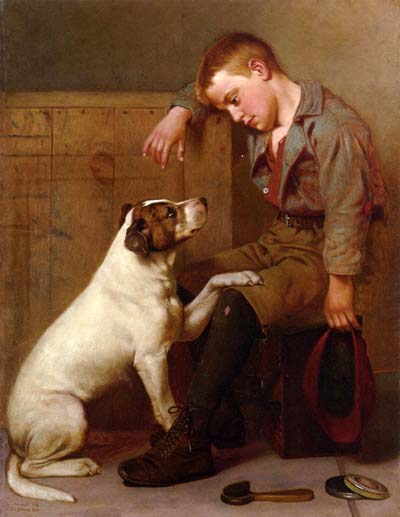
Best Friends: 1908
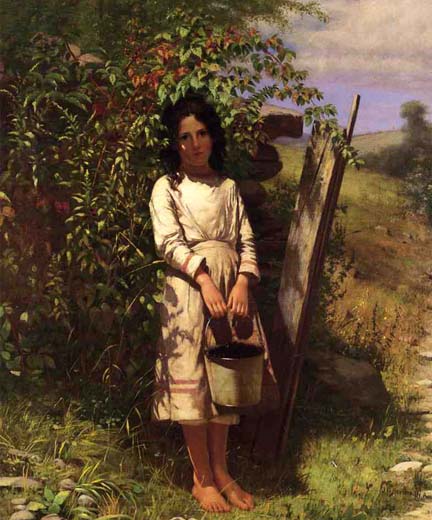
Blackberry Picking: Date Unknown
_ca_1865.jpg)
Broken Parasol: ca 1865
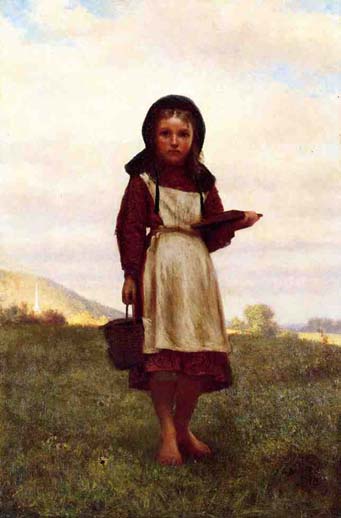
Coming over the Hills: 1874
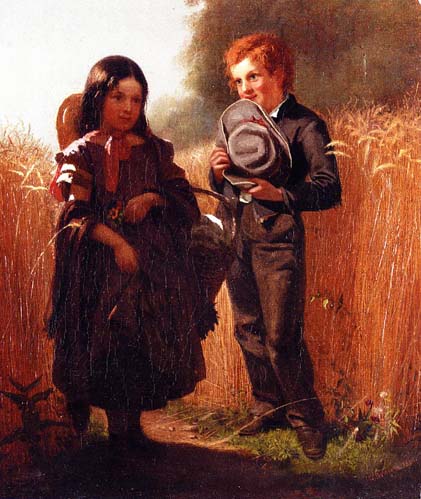
Coming Thro' the Rye: 1860
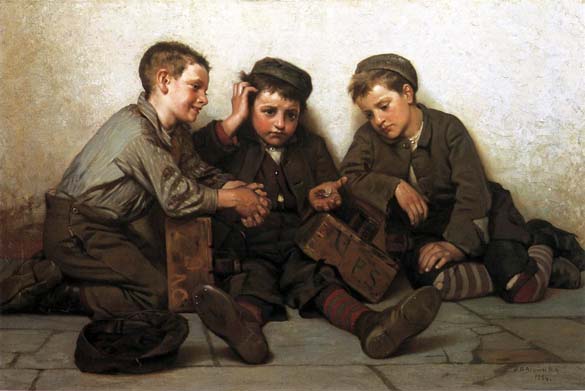
Coming up Short: 1884
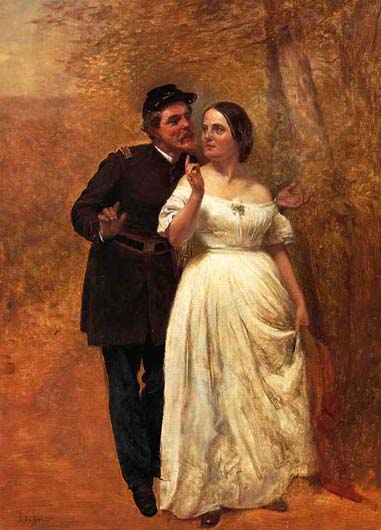
Courting: Date Unknown
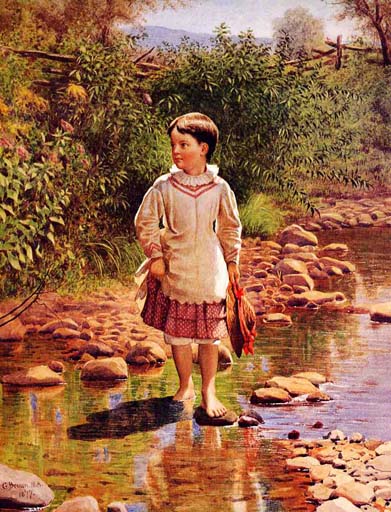
Crossing the Brook: 1877
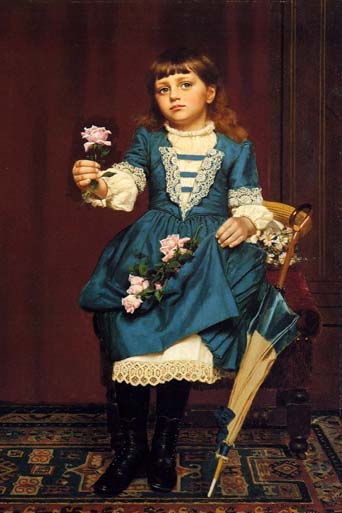
Daisy McComb Holding a Pink Rose: 1888

Dear Old Grannie: Date Unknown
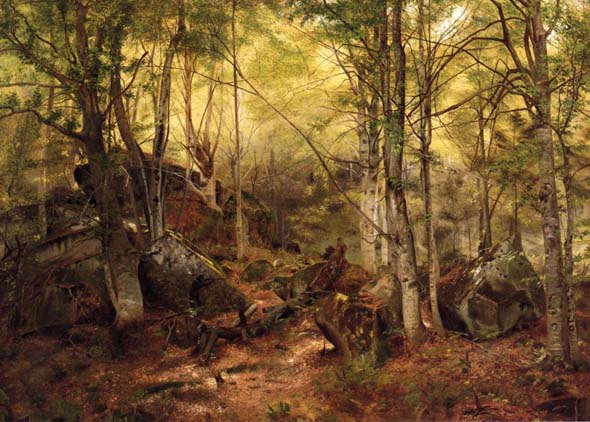
Deerhunter in the Woods: 1864
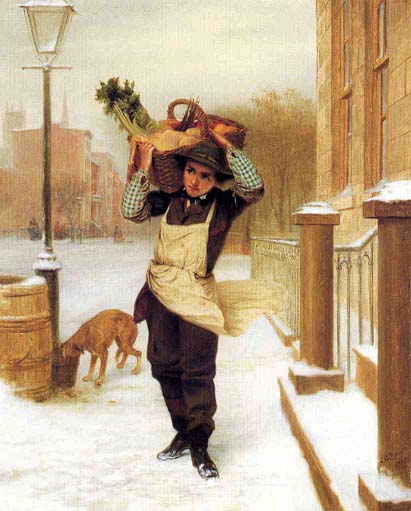
Delivery Boy: 1863

Don't Move: 1904
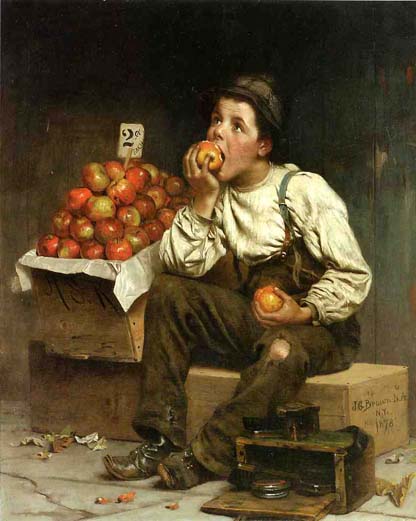
Eating the Profits: 1878

Eying the Fruit Stand: 1884
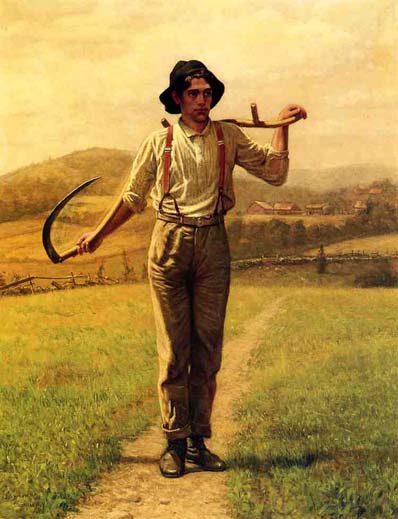
Fieldhand with a Sythe: 1909
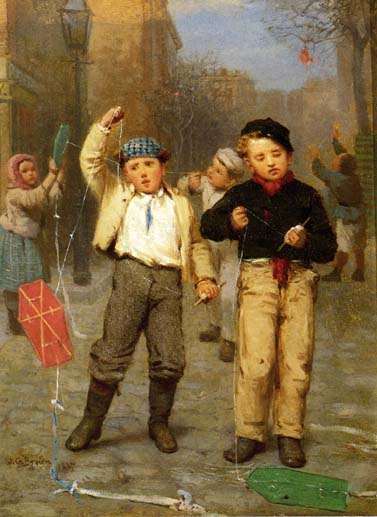
Flying Kites: 1867
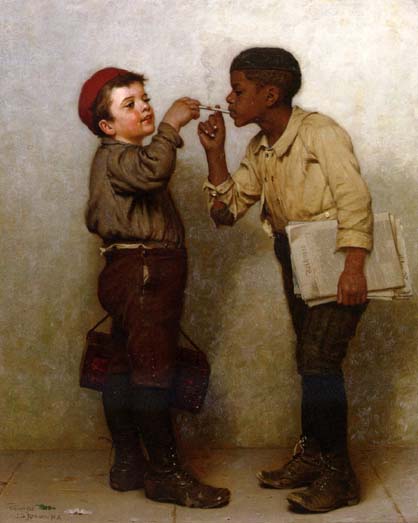
Give Him a Light: ca 1888-89

Give Me a Swing: 1882

Golden Locks: 1880
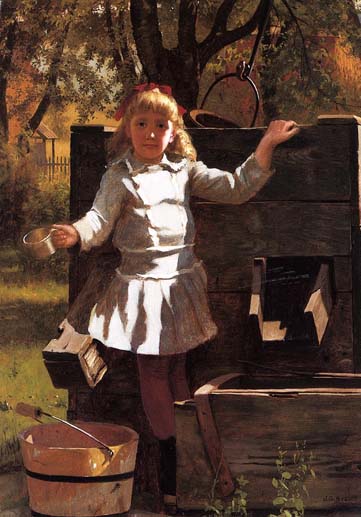
Have a Drink: ca 1880
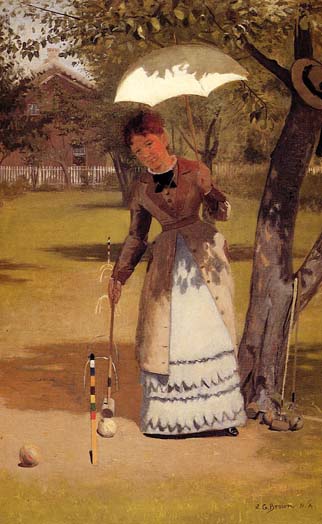
Have a Game: ca 1873-77
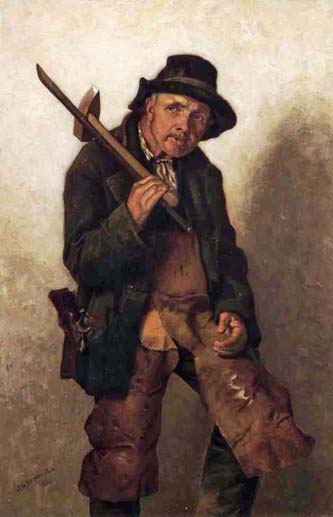
He Toils at Eighty: 1884
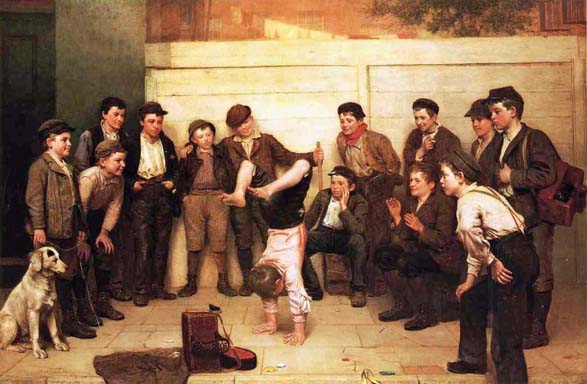
Heels over Head: 1894
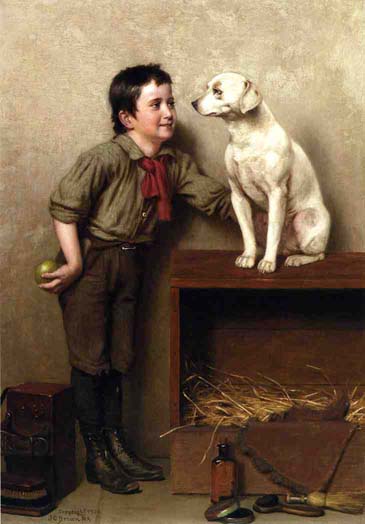
His Favorite Pet: 1906
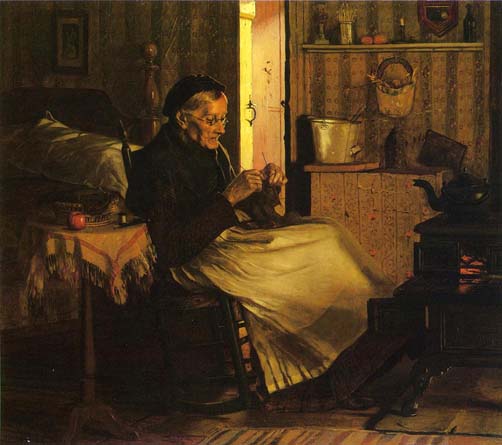
Home Comfort: Date Unknown
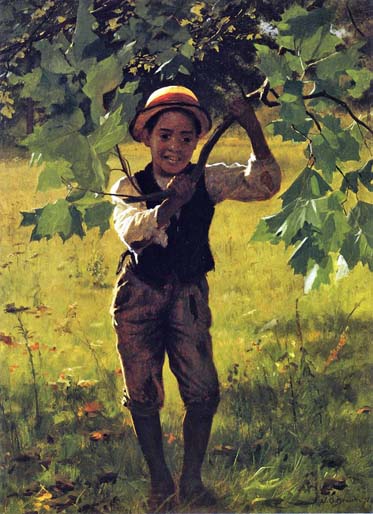
How d'ye: ca 1875-80
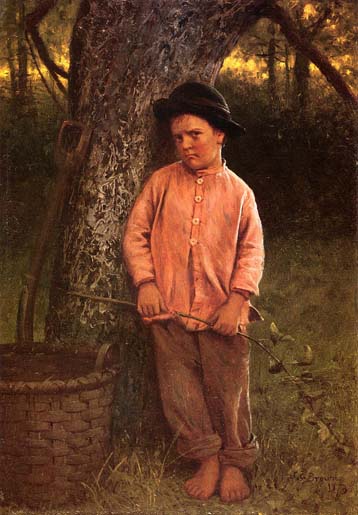
I Won't Go: 1873
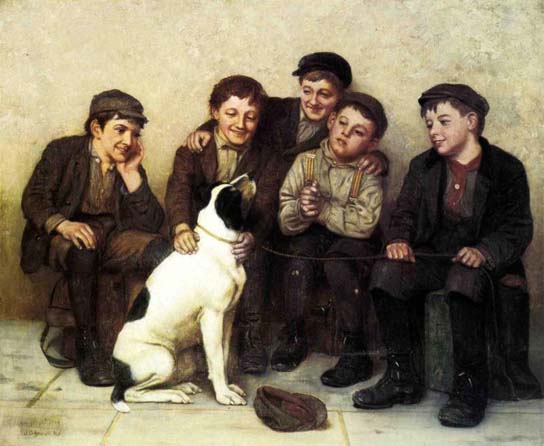
In Good Hands: 1909
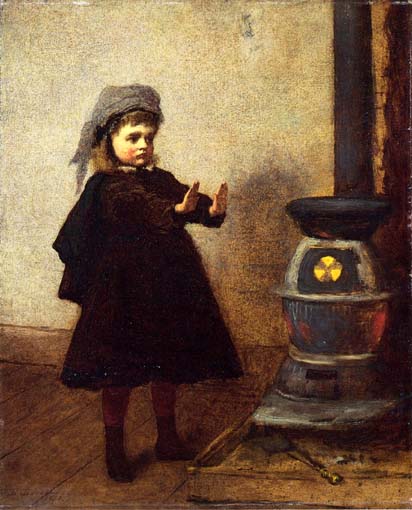
Isn't it Cold: 1876
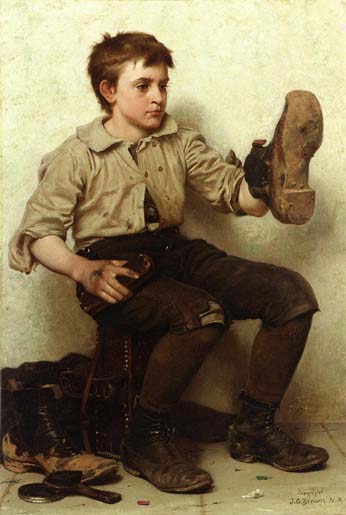
Jersey Mud: ca 1885-90
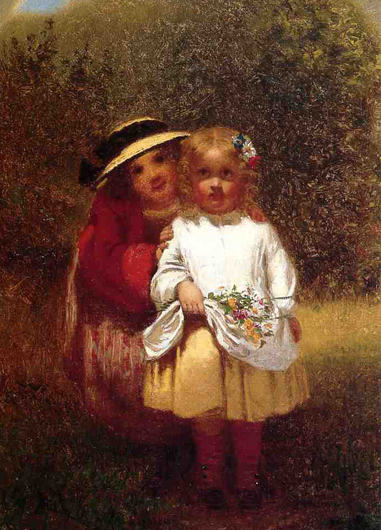
Learning to Curtsey: 1863
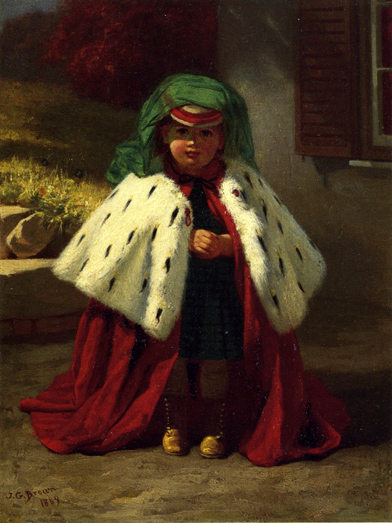
Little Girl with Ermine Coat: 1869
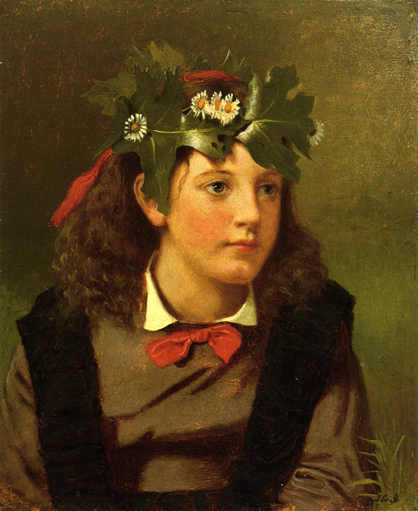
Little Miss Autumn: ca 1865

Look out for the Engine while the Bell Rings: 1863
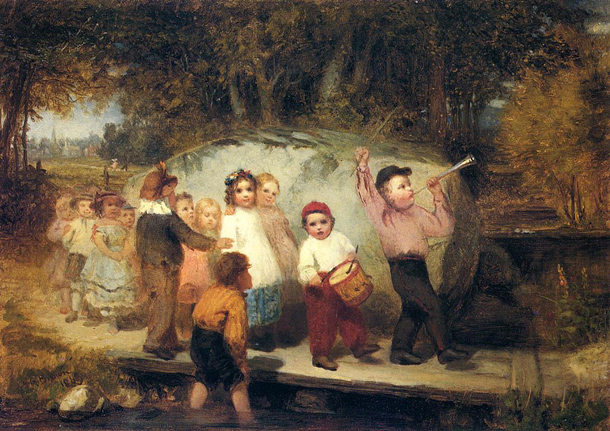
Marching Along: 1863
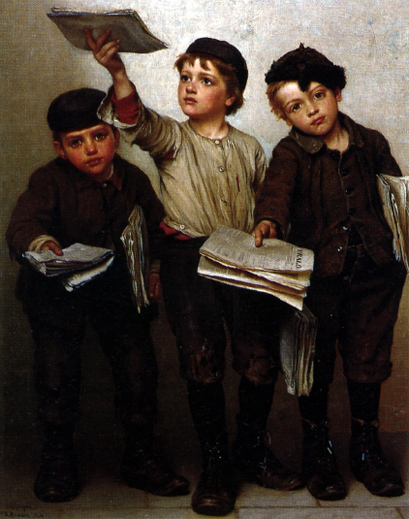
Morning Papers: 1889

News Boy: Date Unknown
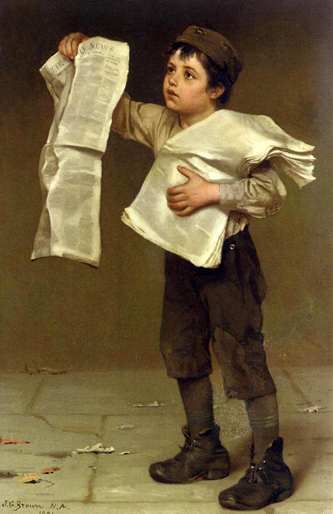
Newsboy: 1884
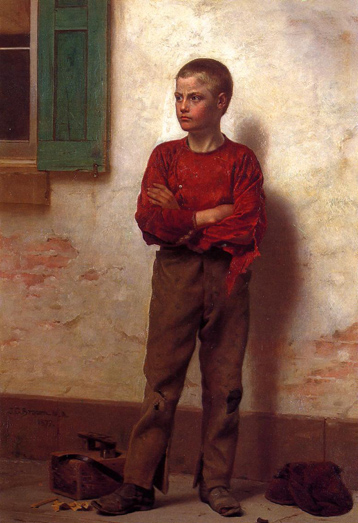
Not to be Trifled With: 1877

Old Memories: ca 1883
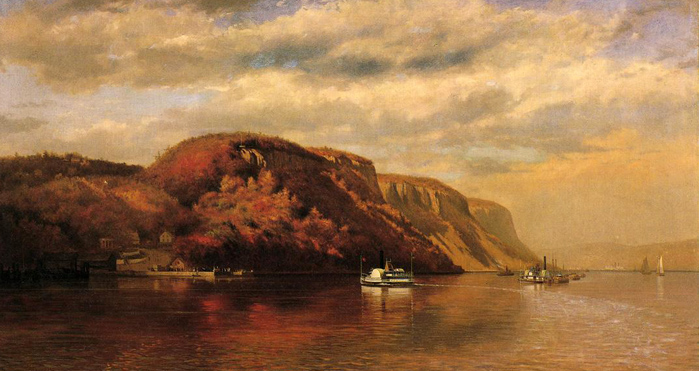
On the Hudson: 1867

Paddy's Valentine: 1885

Parted: Date Unknown

Plotting Mischief: 1883
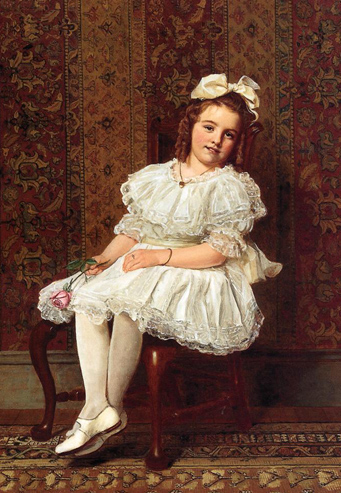
Portrait of Miss Gibson: 1908
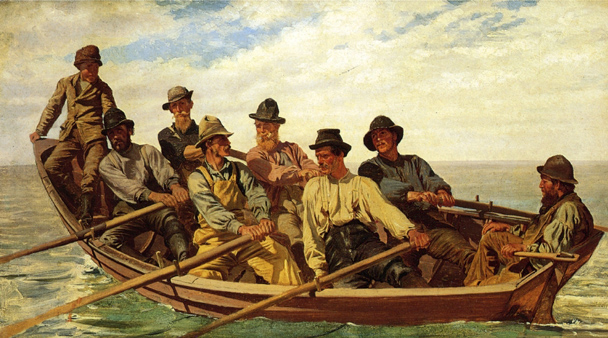
Pull for the Shore: ca 1878
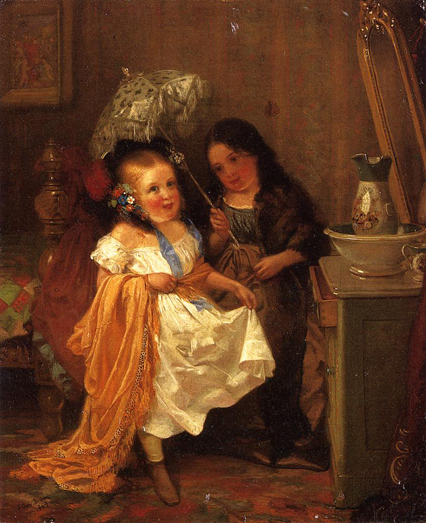
Putting on Airs: 1862
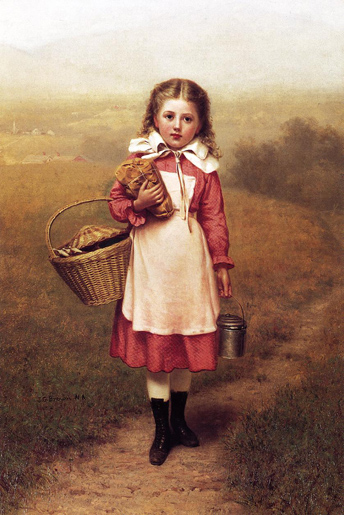
Returning Home: Date Unknown
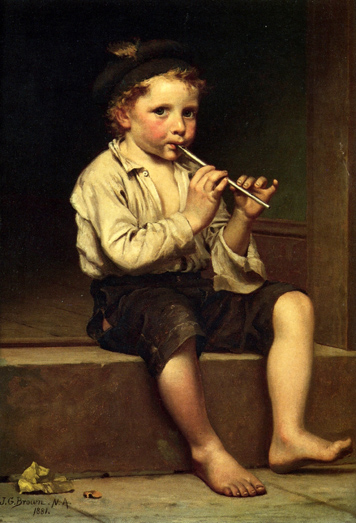
Rhythm: 1881
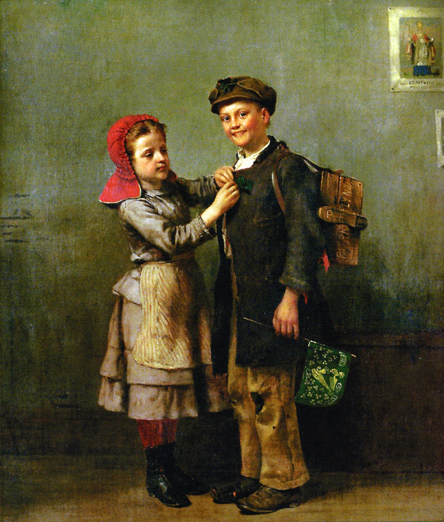
Saint Patrick's Day: 1887
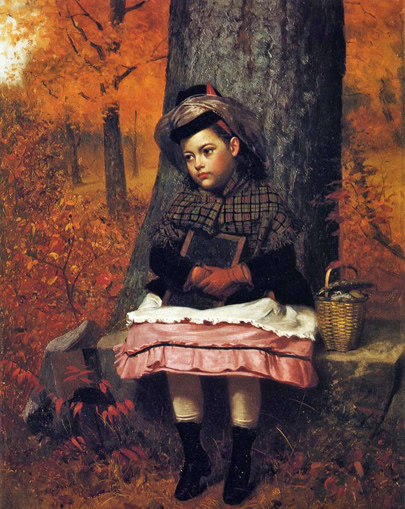
School Bound: 1873
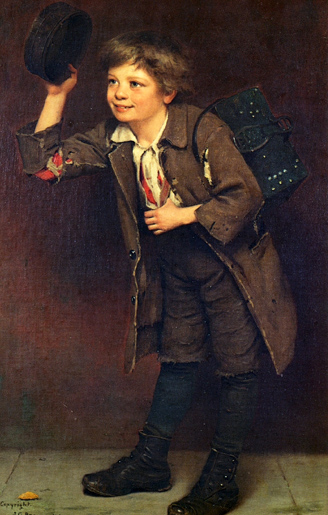
Shine, Mister: Date Unknown
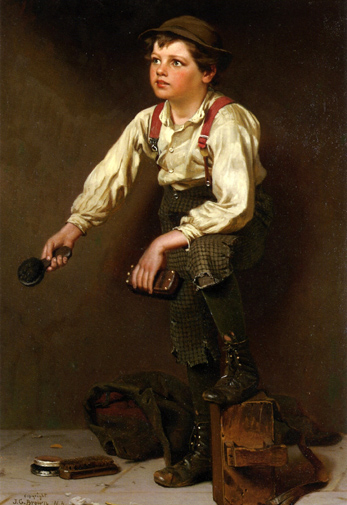
Shoe Shine Boy: Date Unknown
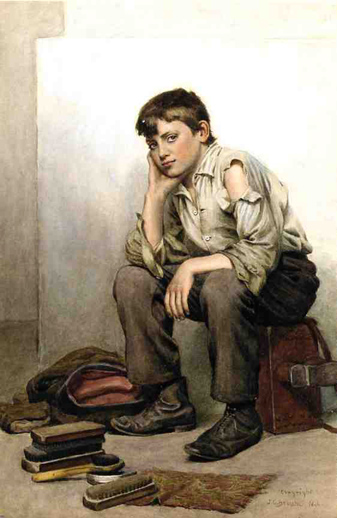
Shoe Shine Boy: Date Unknown
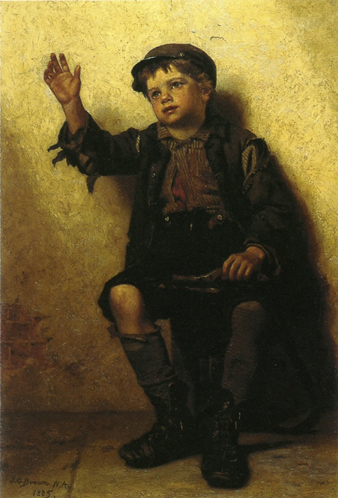
Shoeshine Boy: 1885
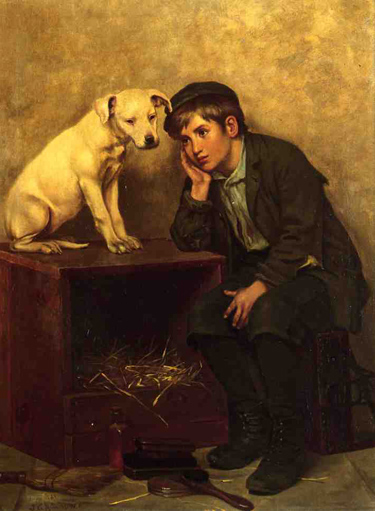
Shoeshine Boy with His Dog: Date Unknown
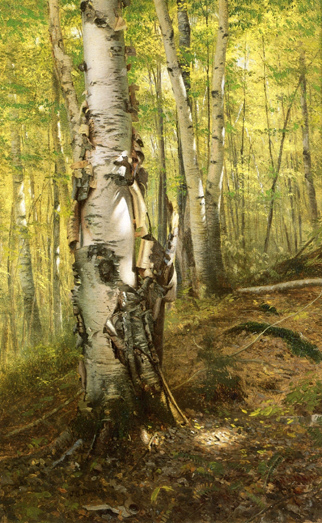
Silver Birches: 1864
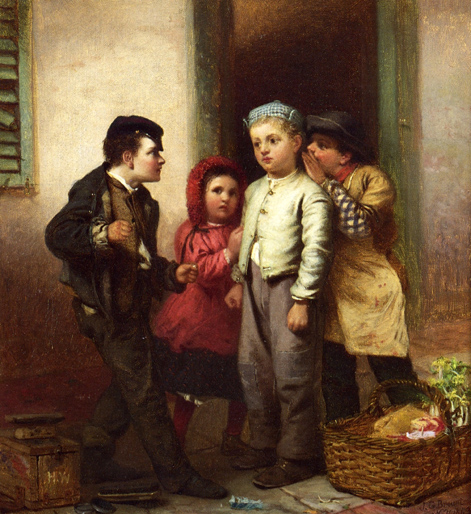
Sorry He Spoke: 1863
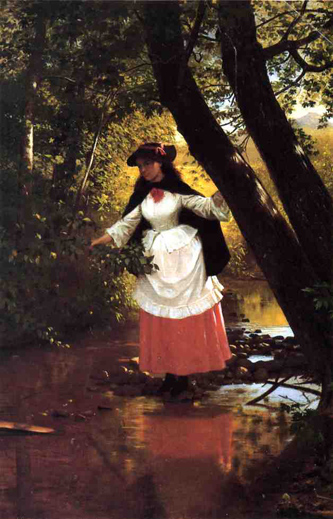
Stepping Stones: Date Unknown
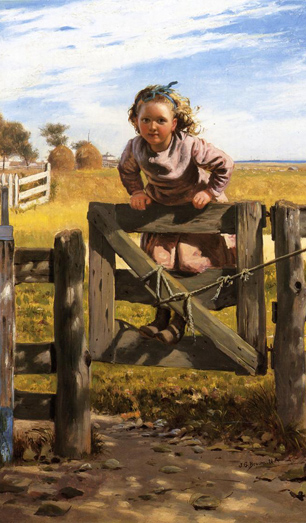
Swinging on a Gate, Southampson, New York: ca 1878-80

Sympathy: 1909
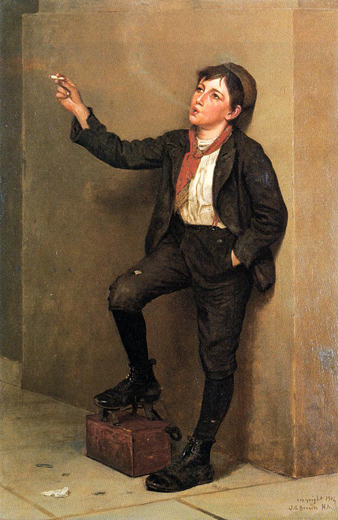
Taking a Break: 1904
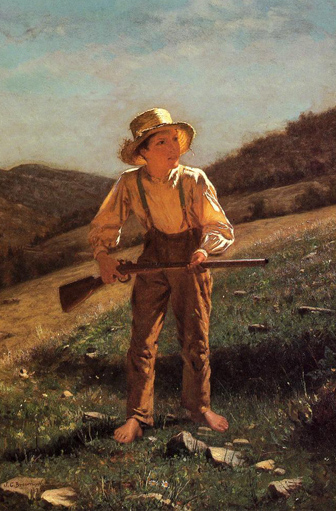
The Anxious Moment: 1875
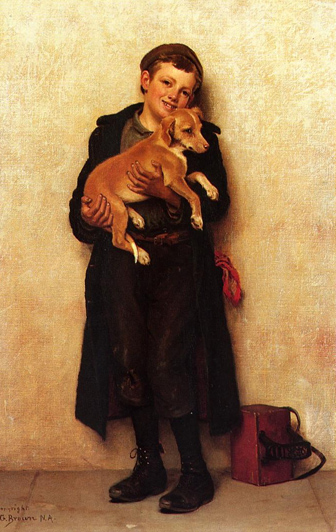
The Bootblack: Date Unknown
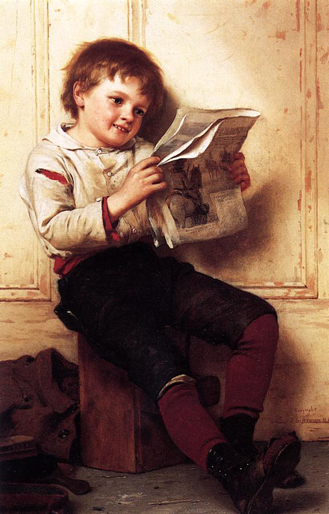
The Bootblack: Date Unknown
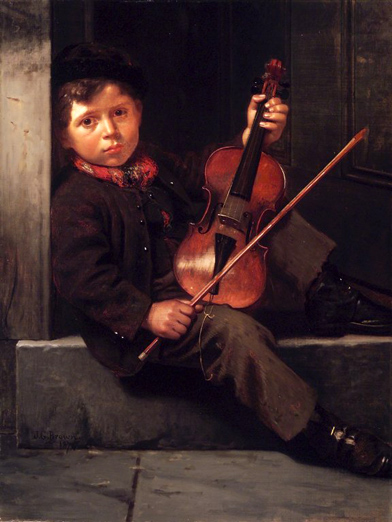
The Boy Violinist: ca 1874
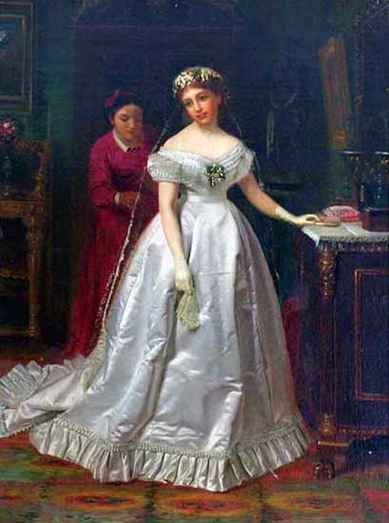
The Bride: 1869
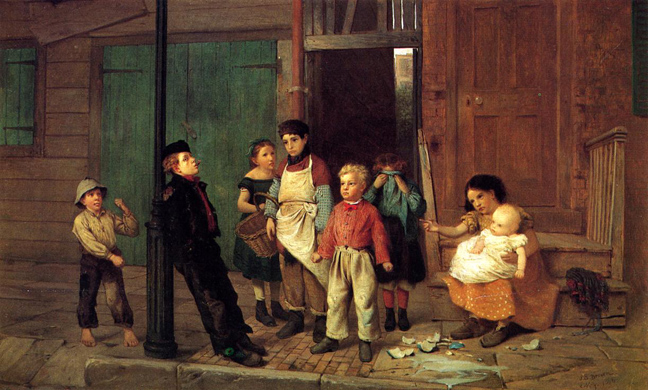
The Bully of the Neighborhood: 1866
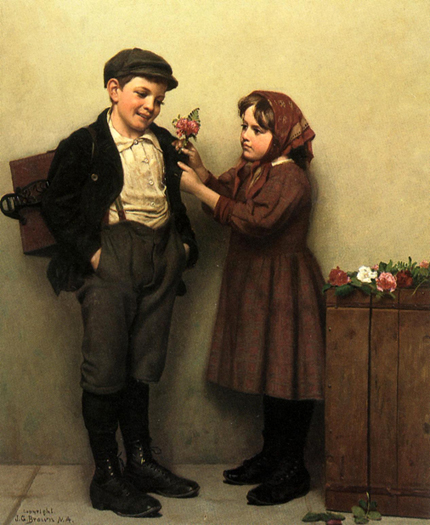
The Button Hole Posey: ca 1894

The Cherry Picker: 1875
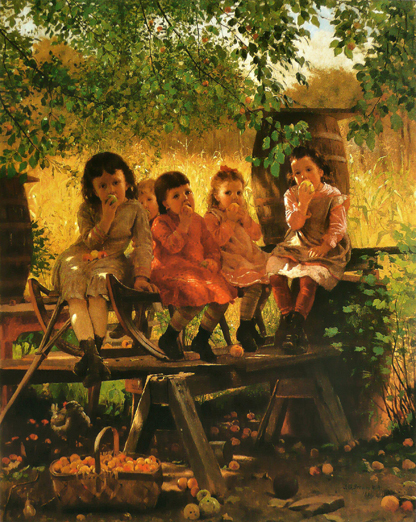
The Cider Mill
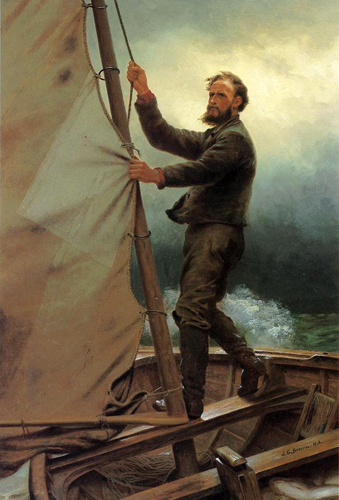
The Coming Squall: Date Unknown
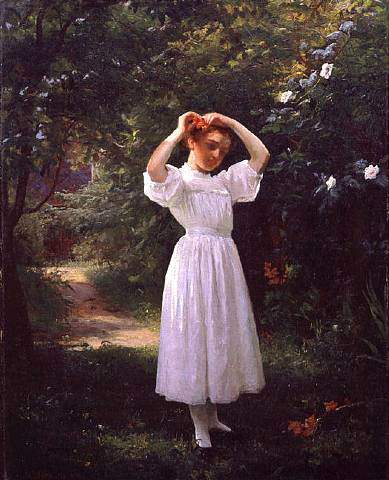
The Coquette: ca 1870
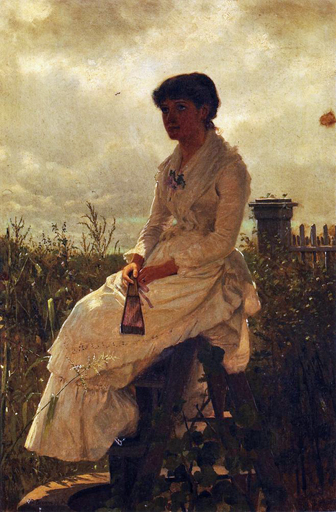
The Daydream: 1882
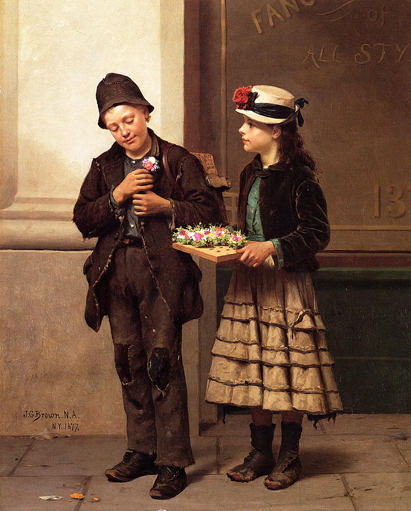
The Flower Girl: 1877

The Foundling: 1907
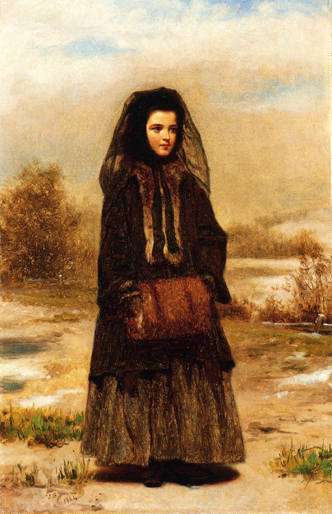
The Fur Muff: 1864
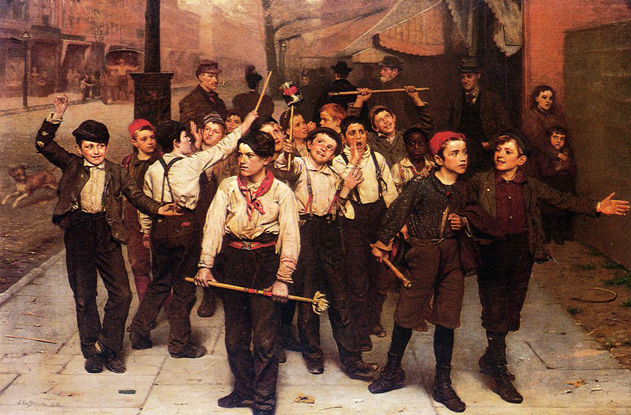
The Gang: Date Unknown

The Industrious Family: ca 1905
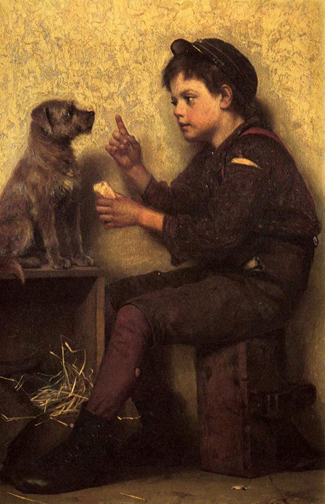
The Lesson: 1886
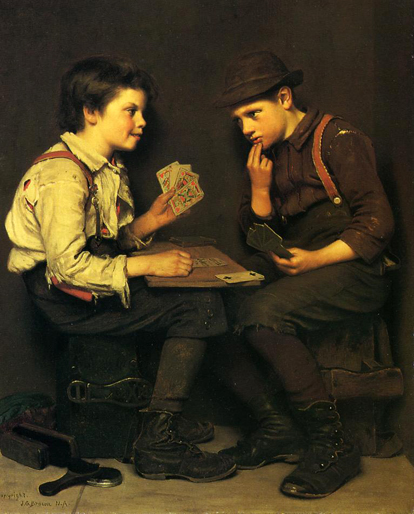
The Little Joker: Date Unknown

The Little Servant: 1886-91
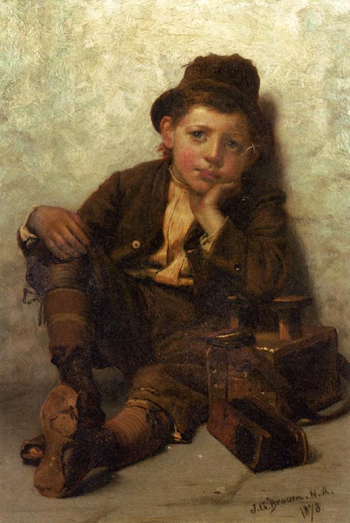
The Little Shoe Shine Boy: 1878
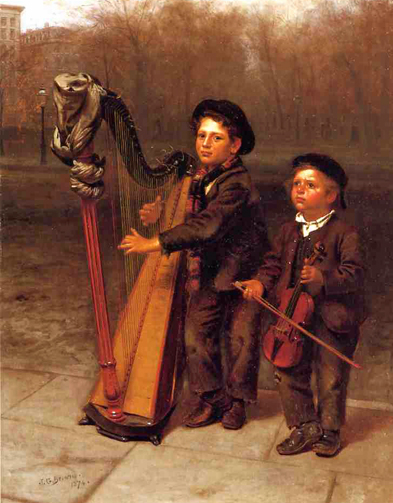
The Little Strollers: 1874
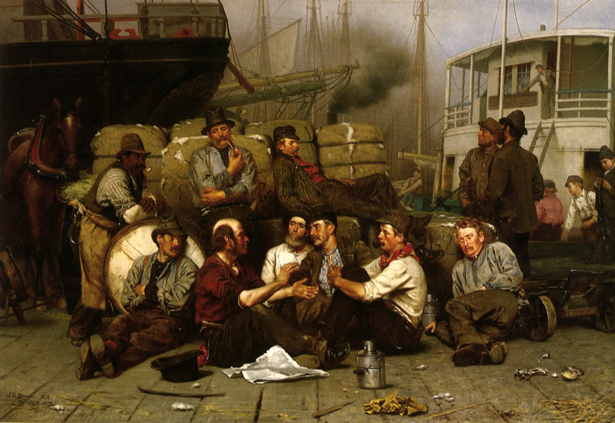
The Longshoremen's Noon: 1879
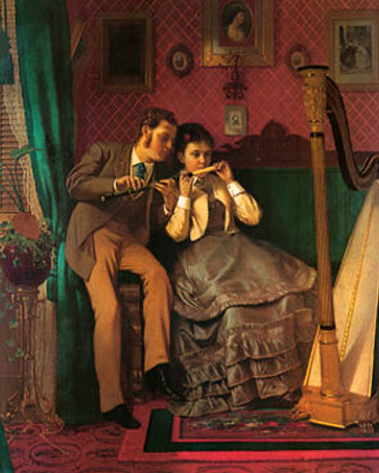
The Music Lesson: 1870

The New Puppy: Date Unknown

The Picnic: 1861
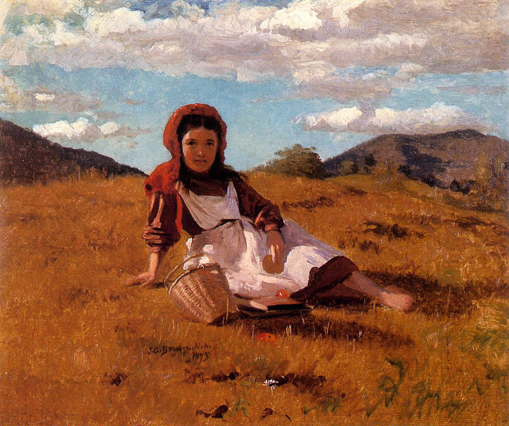
The Picnic Basket: 1873
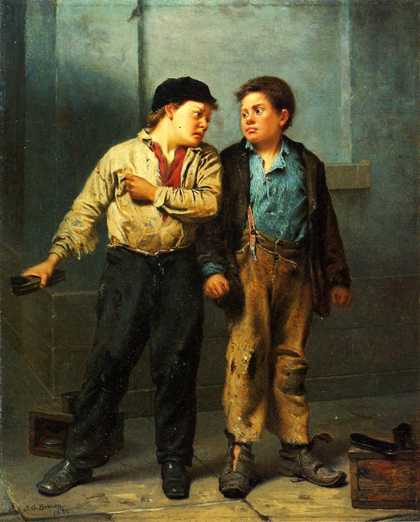
The Quarrel: 1866
_1894.jpg)
The Sidewalk Dance
(aka A Sidewalk Dance): 1894

The Sunflower Girl: 1880
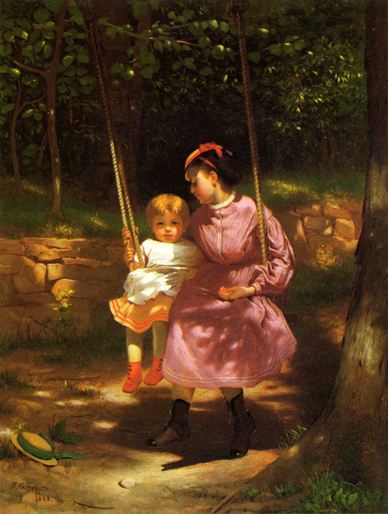
The Swing: 1868
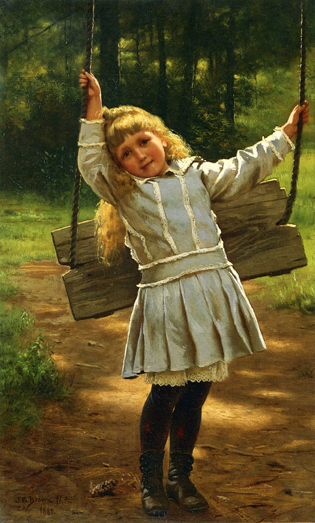
The Swing: 1880
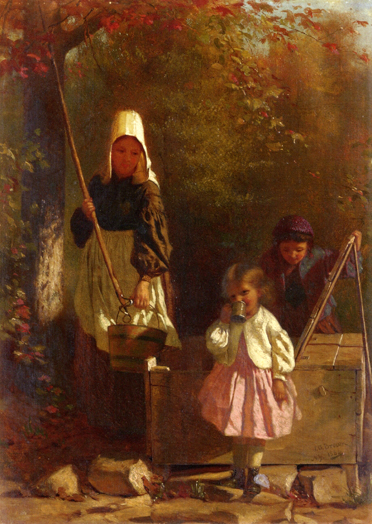
The Tin Cup: 1864
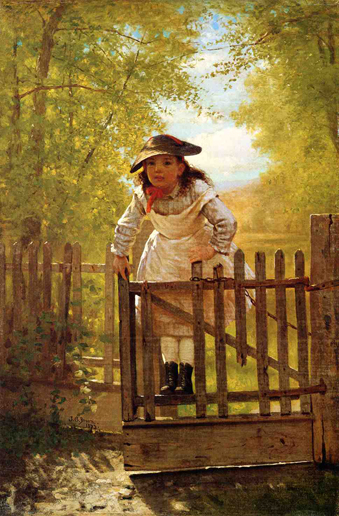
The Tomboy: 1873
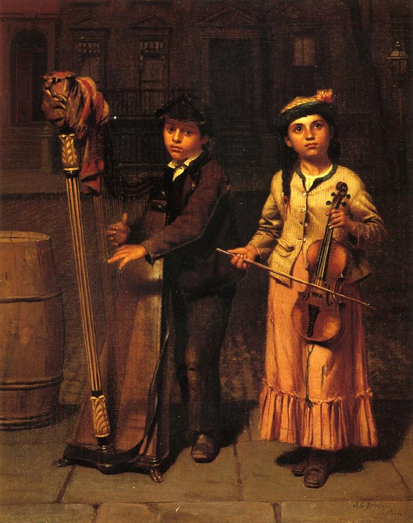
The Two Musicians: 1874
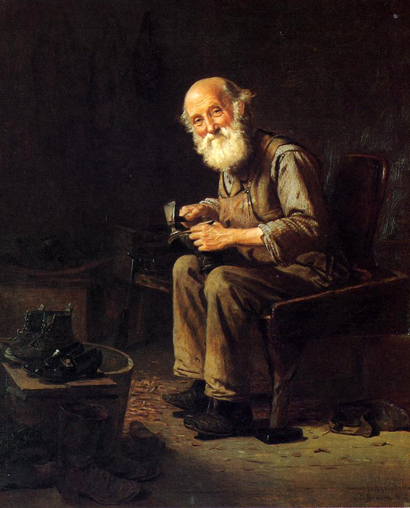
The Village Cobbler: 1903
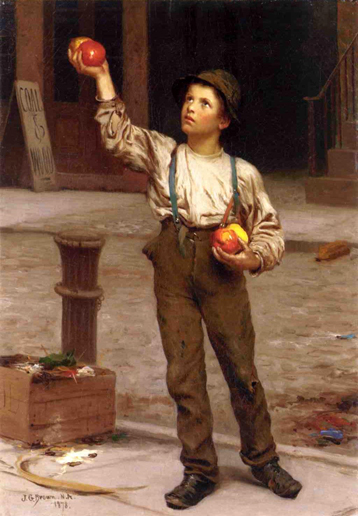
The Young Apple Salesman: 1878
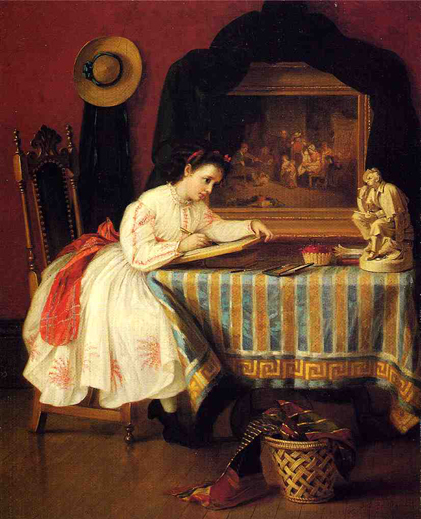
The Young Artist: 1867
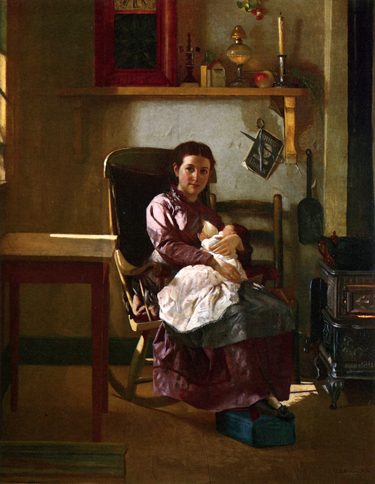
The Young Mother: Date Unknown
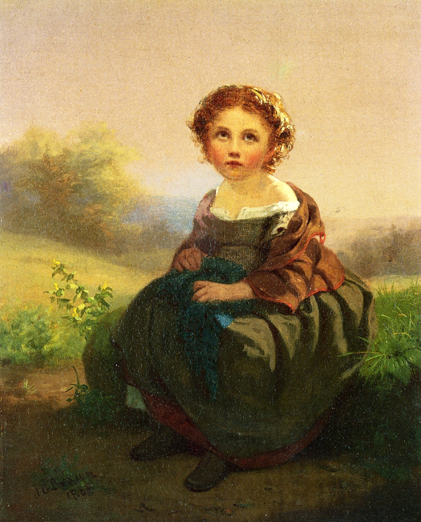
Thoughts by the Wayside: 1861
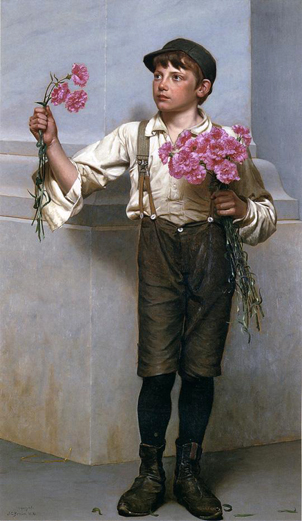
Three for Five: 1890
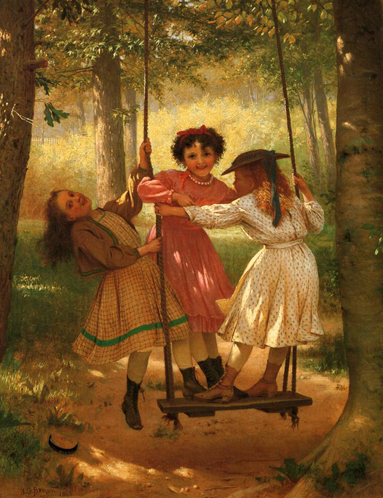
Three Girls on a Swing: 1868
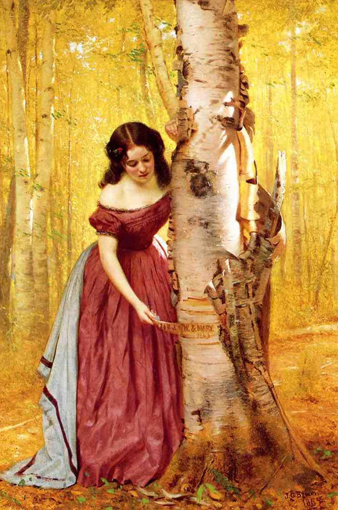
Thus Perish the Memory of Our Love: 1865
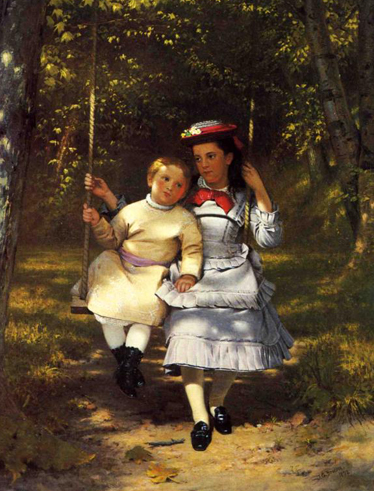
Two Girls on a Swing: 1872
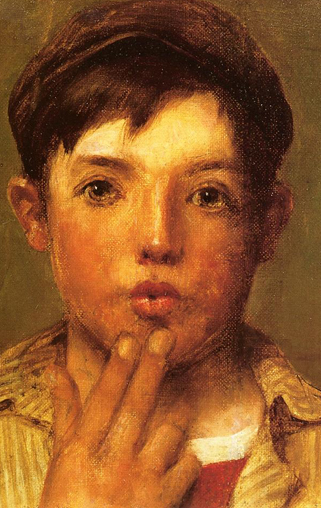
Urchin Head of a Boy: Date Unknown
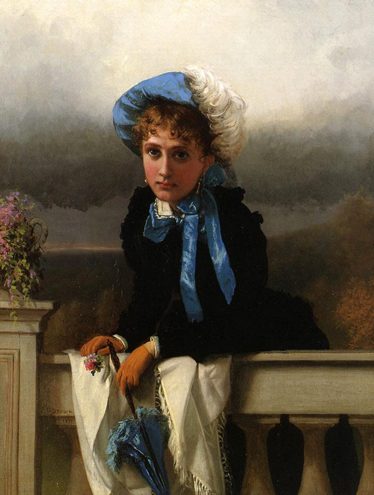
Waiting for Her Suiter: 1871

When I Was Young: 1910

Winter Sports in the Gutter: 1875
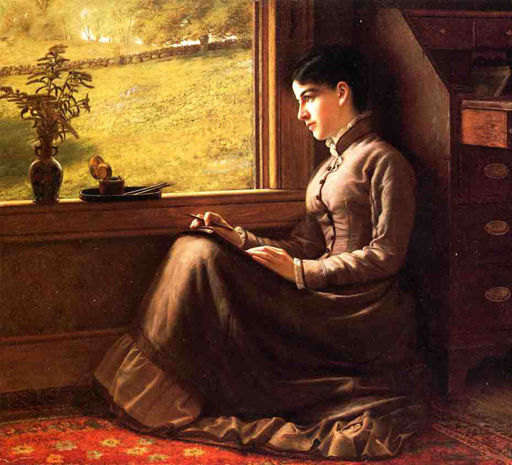
Woman Seated at Window: 1872
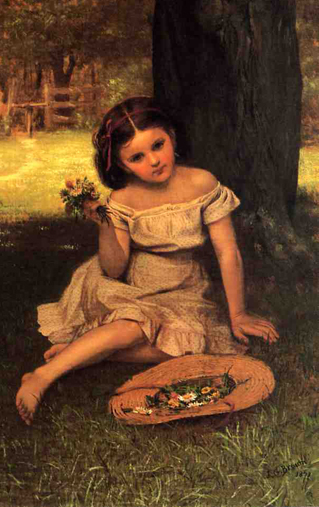
Young Girl with Flowers: 1871
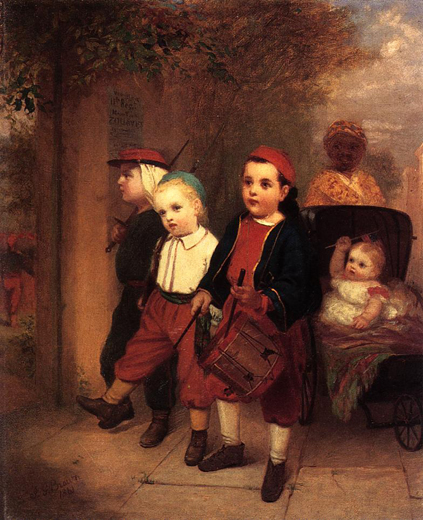
Young Recruits: 1861
I find John George Brown's works (paintings) intriguing and a bit of a wonder. I read his varied biographies with interest. There were several comments made that piqued my interest especially painting children as if they were older more mature individuals. I found the 'Shoe Shine Boys' or the 'Bootjack Boys' more than just a bit interesting. I can remember when I was stationed in Turkey in the early 1970's where there were shoe shine boys everywhere you turned. How old they seemed to be could have been well beyond what I assumed their actual age probably was. Yet, one aspect their lifes was unmistakable - they were very poor.
~ Senex Magister
Return to Pagina Artis
Return to Bruce and Bobbie's Main Page.